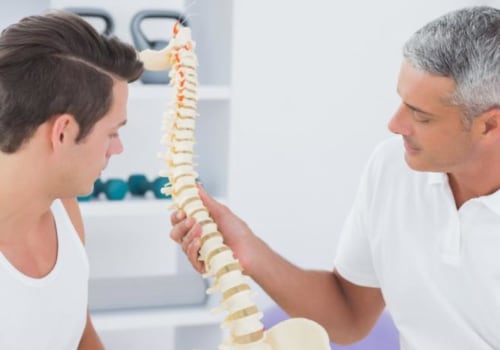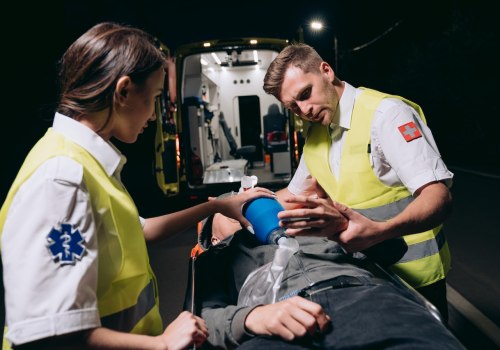Osteopathy is a form of holistic healthcare that focuses on treating and preventing health problems by moving, stretching, and massaging a person's muscles and joints. It is based on the principle that the well-being of an individual depends on the proper functioning of their bones, muscles, ligaments, and connective tissue. Osteopaths work with the body as a whole system, using manual therapy techniques to restore balance, relieve pain, and improve overall health. By addressing not only symptoms but also the underlying causes of discomfort, osteopaths can help with a wide range of conditions and enhance a person’s quality of life.
Holistic Approach to Healing
Osteopathy is unique in that it takes a holistic approach to healthcare. Unlike some traditional medical treatments that focus on specific ailments or parts of the body, osteopathy views the body as an interconnected system. Osteopaths believe that all parts of the body must function together for optimal health. If one part of the body is compromised, it can affect other areas, leading to pain or dysfunction. For example, someone suffering from chronic back pain might also experience tension in their neck, shoulders, and legs as the body tries to compensate for the problem.
This holistic approach allows osteopaths to treat not only the immediate area of pain but also any related issues that may be contributing to the discomfort. Osteopathic treatment is not limited to bones and joints; it also addresses issues in the nervous, circulatory, and lymphatic systems. This comprehensive perspective makes osteopathy effective for managing long-term health issues, promoting recovery from injury, and supporting overall wellness.
Pain Relief and Improved Mobility
One of the most common reasons people seek osteopathic treatment is to alleviate pain and restore mobility. Osteopaths use various hands-on techniques to manipulate and mobilize the joints and tissues, which can relieve tension and reduce pain. This is especially beneficial for individuals dealing with musculoskeletal conditions such as back pain, neck pain, and joint stiffness. Through gentle manual adjustments, an osteopath can increase blood flow to affected areas, decrease inflammation, and stimulate the body’s natural healing processes.
For people suffering from conditions like arthritis, osteopathy can help improve joint function and reduce the reliance on pain medications. Osteopaths use techniques like stretching, massage, and joint mobilization to enhance flexibility, improve posture, and restore the body's natural alignment. This helps reduce the strain on muscles and joints, leading to better overall movement and less pain over time.
Treatment of Chronic Conditions
Osteopathy can be particularly beneficial for people dealing with chronic conditions. Chronic pain, such as that caused by fibromyalgia, sciatica, or repetitive strain injuries, can significantly affect a person’s quality of life. Osteopaths are trained to identify the root cause of pain and develop a personalized treatment plan to manage it effectively. By addressing the underlying causes of pain and dysfunction, osteopaths can help reduce symptoms and improve day-to-day functioning.
For people with chronic headaches or migraines, osteopathy can offer a natural alternative to medication. Often, headaches are caused by tension in the muscles of the neck and upper back, or by issues with the alignment of the spine. Through gentle manipulations and soft tissue techniques, osteopaths can release this tension, improve circulation, and alleviate headache symptoms. By treating the body as a whole, osteopathy can also help address lifestyle factors that may contribute to chronic conditions, such as stress, poor posture, or lack of exercise.
Preventative Care
In addition to treating existing conditions, osteopaths play a crucial role in preventative healthcare. Regular osteopathic treatments can help individuals maintain optimal health and avoid future injuries or illnesses. Osteopaths can identify areas of tension or imbalance in the body before they develop into more serious problems, allowing patients to take proactive steps toward maintaining their health.
For athletes or people with physically demanding jobs, osteopathy can help prevent injuries by improving flexibility, strength, and posture. By ensuring that the body’s musculoskeletal system is functioning efficiently, osteopathy can reduce the risk of injury during physical activity. Osteopaths can also provide advice on stretching, exercise, and lifestyle changes to support long-term health and well-being.
Support for Mental Health
Osteopathy doesn’t just focus on physical health; it also takes into account the connection between the body and mind. Stress and anxiety can manifest in physical symptoms such as muscle tension, headaches, and digestive issues. Osteopathic treatment helps relieve this tension, promoting relaxation and reducing the physical toll of stress on the body. Many people report feeling calmer and more balanced after an osteopathic session, as the gentle manipulations can help stimulate the parasympathetic nervous system, which controls the body's relaxation response.
Incorporating osteopathy as part of a broader wellness routine can support mental health by reducing physical discomfort and improving overall well-being. In some cases, people combine osteopathy with other holistic therapies to enhance their healing journey. For example, they may explore the benefits of infrared saunas to complement osteopathic care. Reading an iComfort sauna review - Healing Heat Therapy might provide insights into how this type of sauna can help relax muscles, increase circulation, and promote healing, making it a great addition to an osteopathy treatment plan.
Conclusion
Osteopathy is a versatile and holistic approach to healthcare that offers numerous benefits for people dealing with pain, chronic conditions, and stress. By focusing on the whole body rather than just symptoms, osteopaths can address the root causes of pain and discomfort, helping patients achieve lasting relief. Whether you’re looking to recover from an injury, manage a chronic condition, or simply improve your overall health, osteopathy provides a gentle, natural way to restore balance and well-being. With its ability to enhance both physical and mental health, osteopathy plays a crucial role in the broader landscape of wellness and preventative care.







